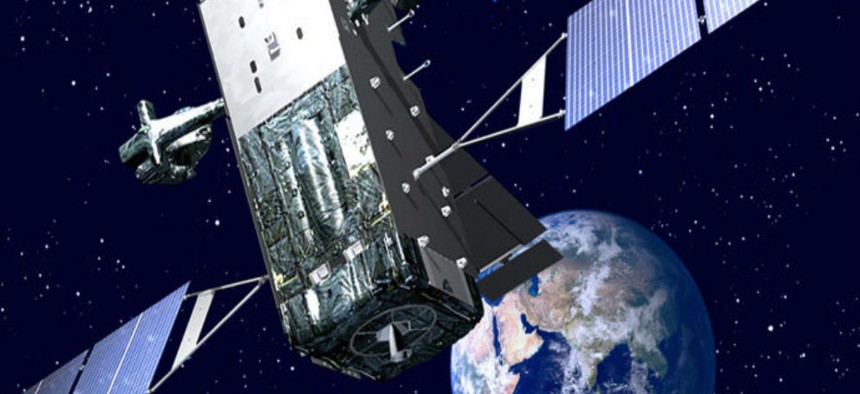Air Force and industry rethink requirements to prep for space war
The emergence of new threats will require the Air Force and industry to rethink training and technical approaches to space strategy.
During a discussion on the future of the military in space, leaders from the U.S. Air Force and industry argued that in the coming years, a rethinking of training, capabilities, and the environment itself, would be necessary to counter threats on the immediate horizon.
Traditionally, the thinking about training in space has been about how you operate satellites in orbit, said Chris Long, vice president of Orbital ATK’s National Security System,. Instead, he said, we need to start thinking about how you fight in space.
Brigadier General Chance Saltzman, director of current operations for the deputy chief of staff for operations of the Air Force, mirrored this sentiment, expressing the calculus in space is, “no longer just about what you buy,” but how you build force packages or concepts of operation (CONOPS) in space.
According to industry leaders, implementing this capability would necessitate “virtual PhDs” capable of monitoring, operating, and fighting, using these platforms.
Implementing these new ways of thinking is largely a matter of resiliency in the space architecture, according to all the panelists. Orbital’s Long and Lars Hoffman, Senior Director of Government Sales at SpaceX, said their respective companies were already considering ways in which to ensure that their products met the newfound needs of warfighters in the environment.
When asked, both Hoffman and Long said their companies placed a priority on ensuring the security of their supply chain in order to meet this contest threat environment. Additionally, Hoffman referenced SpaceX’s Automated Flight Safety System, a program that can cause the rocket to self-destruct should it veer off course. Instead of a manned system, the program functions autonomously, which, according to Hoffman, is a safer and more reliable alternative. He also cited lowered costs and reusability, like SpaceX provides, as ways in which to shift the costs and calculus towards a larger focus on the payloads themselves.
Major Geneneral Jay Santee (Ret.) discussed the ways in which the Air Force would have to adapt to fit these changes. He mentioned that while communicating with satellites once-a-day might be sufficient in peaceful environments, a contested environment requires continuous communications, and the infrastructure to supply it. Despite this fact, Saltzman was confident that there “wouldn’t be any surprises,” when developing these new models, but rather adapting lessons already learned to a new environment.
“I like it,” Saltzman said, when asked whether people should start thinking about an Air Force Space Combat Command.




